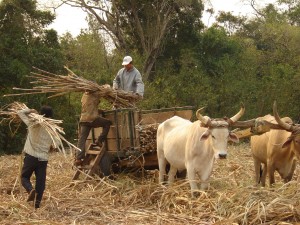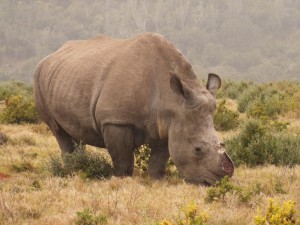CHAPTER < THREE – OUR FUTURE THROUGH A LOOKING GLASS
“Once upon a time humans, animals, plants, wind, sun and stars were able to talk together. God changed this, but we are still a part of a wider community. We have the right to live, as do the plants, animals, wind, sun and stars, but we have no right to jeopardize their existence.” Beliefs of the San Bushman of Southern Africa
To state that we are living in an epochal time, unlike any other in the history of the planet, is not being overly dramatic it is stating a fact. Each generation has its defining predicaments – emergencies so great that it takes wave upon wave of people working together to resolve them. The 20th Century was marked by many such emergencies: the influenza pandemic of 1918-1919 which left millions of people dead; World War One and World War Two; the Korean War; the Cold War; the Vietnam War; the Gulf Wars; the wars in Afghanistan and Bosnia; the wars in Africa; the Aids pandemic. All these occurrences and more defined a turbulent century and the people who lived within it.
 It was a century marked by cultural conflict and political intolerance, pandemics of disease and anxiety, extreme stress and strife. Yet it was also a century distinguished by amazing achievements such as trailblazing space and polar travel, computer technology, medical advancements, scientific discoveries and political reform. In many ways it was a pioneering century. However all this took place against a backdrop of general global sufficiency.
It was a century marked by cultural conflict and political intolerance, pandemics of disease and anxiety, extreme stress and strife. Yet it was also a century distinguished by amazing achievements such as trailblazing space and polar travel, computer technology, medical advancements, scientific discoveries and political reform. In many ways it was a pioneering century. However all this took place against a backdrop of general global sufficiency.
There was enough food, water, fuel and raw materials with which to build nations, protect nationalism and advance economically, sociologically, scientifically and technologically. And although there were pockets of famine in the developing world and times of austerity in the developed world, for the most part as men and women guarded national interests, waged war against each other and achieved the previously unimaginable, they were unconcerned about the most basic tenets of life.
If they lived in the Western world, they may have worried at times that there would not be a large enough roast for Sunday lunch or that sugar was getting low. They might have fretted that they would not have enough gasoline to drive to the shops or to power their tanks as they trundled over desert landscapes. They may have been concerned about an empty water bottle or radiator. But these were short-term concerns, fixable at the next shopping mall, ration queue or refuelling depot.
However, in the 21st Century the basic needs of life could have an entirely different connotation. With more people now living and expected to be born on Earth than at any time in the history of the human race, we are facing a unique predicament. As the Earth’s resource base sinks lower and lower in response to the needs of vast numbers of people, and 20th Century consumerism continues to drive unsustainable consumption into the 21st Century, ahead of us could well be a time marked by global insufficiency.
 Unless we can find ways of addressing this predicament, there could well be insufficient food, water, fuel and basic raw materials with which to take care of the needs of the billions of people on the planet. Already, throughout the world living standards are falling, with one person in five being malnourished. The spectre of insufficiency is unmistakably drawing closer, and if we prove unable to meet this challenge our children and their children after them may suffer the insecurity of not having enough of the basic needs of life.
Unless we can find ways of addressing this predicament, there could well be insufficient food, water, fuel and basic raw materials with which to take care of the needs of the billions of people on the planet. Already, throughout the world living standards are falling, with one person in five being malnourished. The spectre of insufficiency is unmistakably drawing closer, and if we prove unable to meet this challenge our children and their children after them may suffer the insecurity of not having enough of the basic needs of life.
As I see it this is the defining challenge of our time: to develop a safe and sustainable future, during which the needs of growing populations everywhere are met without destabilising the natural resource base on which they depend. And it is perhaps the greatest predicament that the human race has ever faced.
Food Anxiety
If game rangers in a southern African game park decided to import a herd of elephants into the park one of their first tasks would be to determine the optimum number of elephants that the park could support. At this maximum sustainable population level, known as carrying capacity, the elephants could live comfortably without compromising their habitat. But if during a period of good years their population grew, eventually a stage would be reached beyond which the park could no longer support their greater numbers. As the increased population of elephants browsed and destroyed more and more trees in their quest for food, the vegetal resources on which they depended would begin to decline, and eventually the number of elephants would diminish as many of them died from starvation.
In the 17th Century, there were half-a-billion people on the planet. By the beginning of the 19th Century this figure had doubled to one billion. By 1940, three billion souls peopled the Earth and within 60 years this number had jumped to six billion, with 78 per cent of people living in developing countries. By the next half-century, within just two generations, there could be 10 billion people in the world. The carrying capacity of the Earth has already been reached and one species, our own Homo sapiens sapiens, is appropriating nearly half of the entire food resources available in plants to sustain itself, and for every extra percentage of plant foods that our growing numbers utilise, there is a corresponding proportion of plant energy that becomes unavailable for all of the Earth’s other species.
 In terms of future food security this means that the more people there are on the planet, the less space there will be for plants, the food producers, to grow. Over time, if populations continue to expand at the present rate without a dramatic decrease in numbers through war, disease, or other means, the human race could eventually take over 60 or even 80 per cent of the total terrestrial food supply, until there is almost nothing left for the rest of nature. In this very possible scenario, a Malthusian famine of global proportions could well be the inevitable outcome. And unless ways can be found to correct this dangerous imbalance this could become a reality within our lifetime.
In terms of future food security this means that the more people there are on the planet, the less space there will be for plants, the food producers, to grow. Over time, if populations continue to expand at the present rate without a dramatic decrease in numbers through war, disease, or other means, the human race could eventually take over 60 or even 80 per cent of the total terrestrial food supply, until there is almost nothing left for the rest of nature. In this very possible scenario, a Malthusian famine of global proportions could well be the inevitable outcome. And unless ways can be found to correct this dangerous imbalance this could become a reality within our lifetime.
Carelessness and Extinctions
Another unthinkable outcome of an unsustainable global population growth would be the pushing of thousands of species into extinction as more and more natural habitats become expropriated for human development, and many more hunters make incursions into forests either to kill or capture the wild creatures that live there. It is believed that within 30 years, a little more than one generation, half of the world’s species could become extinct. This percentage constitutes a global mass extinction, the sixth biggest one of which has blighted the Earth since life began.
This means that on land, in the sea, and in the air, myriad species of iridescent butterflies, shy nocturnal cats, chattering monkeys, silver fish, mysterious sea mammals and brilliantly feathered birds could be lost forever, and the chief agent in their disappearance from the planet would be the human race. However, extinctions of animal species as caused by Homo sapiens sapiens are not a recent phenomenon characterised by our time alone. As early men, women and children made their way around the globe, their colonisation was marked by waves of regional extinctions.
During the last Ice Age, in present-day Eurasia for instance, mammoths, woolly rhinoceros, giant deer and cave bears became extinct. On the continent of what is now known as Australia, huge snakes and lizards, giant kangaroos and wombats, giant capybaras, marsupial lions and a rhinoceros-like marsupial called diprotodon were, among many other species, made extinct within just a few thousand years of the arrival of human beings.
In the present-day Americas many species of large mammals such as mammoths, glyptodonts, large, lumbering ant-eaterlike creatures, horses, camels, mastodons, ground sloths, giant armadillos, lions, giant bears and sabre-tooth tigers, disappeared after Ice Age people crossed the land bridge of the Bering Strait from present-day Asia into Alaska. And in Polynesia many species of birds, most flightless like the giant moas of New Zealand, vanished forever from the face of the Earth after humans settled there.
 Although changes in climate and habitat and disease may have played a part in these mass extinctions, it is believed that the use of fire as a hunting weapon, together with the overkilling of many species by early humans, contributed to effectively wiping them off the face of the planet. For early humans were wasteful hunters, often stampeding an entire herd of bison or other game over the edges of cliffs when only a few beasts were needed to provide food, clothing and shelter.
Although changes in climate and habitat and disease may have played a part in these mass extinctions, it is believed that the use of fire as a hunting weapon, together with the overkilling of many species by early humans, contributed to effectively wiping them off the face of the planet. For early humans were wasteful hunters, often stampeding an entire herd of bison or other game over the edges of cliffs when only a few beasts were needed to provide food, clothing and shelter.
Modern people have been no less improvident, often taking carelessly, wastefully, irreverently and brutally from the life around them to fulfill needs of greed, superstition, political expediency or even sheer callous sport. But the mindset that decrees that all that is in Nature is intrinsically for the use and sport of human beings, does not limit expropriation only to other living organisms…